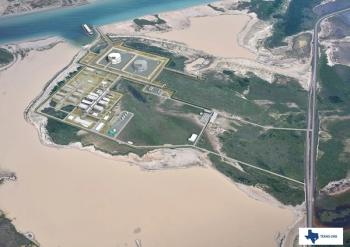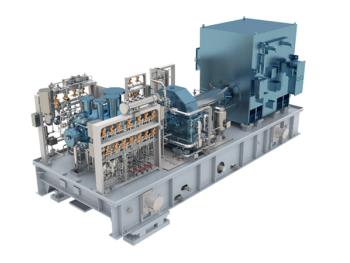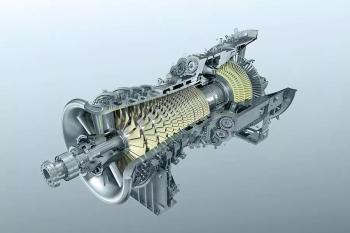
Oxidizing waste gas to generate power
The U.S. Environmental Protection Agency estimated that industrial sources (agricultural, waste, and energy) emitted 323.5 million metric tons of methane into the atmosphere in 2005 alone. Methane is both a powerful greenhouse gas and a highly energy dense gas present in waste gases. Releasing large quantities of methane into the atmosphere is not only detrimental to the environment, but also a wasteful solution for an energy dense fuel. For this reason, governments are increasingly regulating methane emissions. Producers have therefore begun to push the limits of utilizing low methane gases as a renewable source of energy.
The decision to dispose of or utilize a waste gas stream is typically determined by evaluating criteria such as heating value, cleanliness, corrosiveness and availability. The heating value of the gas is a measure of the fuel’s energy density. It determines whether the fuel can operate conventional technology without supplementing it with a more energy dense fuel. In addition, the heating value determines flow requirements for the machine. The heating value limit is set at 300 BTU/scf and above for current reciprocating engines and gas turbines technologies.
Cleanliness refers to the presence of particulate such as siloxanes, organic and sulfur compounds in the waste gas stream that require removal before use. The removal of these compounds prior to the prime mover ensures proper combustion.
Corrosion occurs primarily in the hot section of the engine. Heavy metals in the gas stream are major contributors to corrosion. Specific treatment and removal of these metals is a necessity in order to ensure a viable life for the machine.
Fuel availability, specifically seasonal variations and future reserves, are of particular importance when evaluating a waste gas utilization project. In most cases, a waste gas project will not be financially beneficial if it requires continual supplementing of fuel.
Such criteria help waste gas producers evaluate the economic benefits of waste gases and the potential for their exploitation. Energy producers should carefully consider waste gas characteristics in as part of the financial feasibility process.
Typical waste gas producers include biomass, landfills, coal mines and associated petroleum gases (APG) from oil & gas operations. The gases from these processes usually have heating values below that which current technology can support (300 BTU/scf). Because current waste gas utilization projects use conventional reciprocating engines or gas turbines as their prime mover, many of these projects remain uneconomical.
In these cases, producers dispose of the gas either through venting or flaring. Venting is detrimental to the environment, with the U.S. Environmental Protection Agency estimating that methane is over 20 times more harmful to the environment than CO2. For this reason, most countries require that waste gases are flared rather than vented. While flaring reduces the release of emissions, it is a financial burden to the producer because it often requires a supplemental gas stream to facilitate combustion due to the low heating value of waste gas streams. The Texas Commission on Environmental Quality (TCEQ) found that above 300 BTU/scf, flare efficiency meets the standard of 98% destruction. Below this level, unburnt emissions are about 20% and head towards 40% as you go lower in heating value. The Global Gas Flaring Reduction partnership, led by the World Bank, estimated that 140 bcm of gas were flared in 2011.
Gradual Oxidation technology was engineered as an alternative to conventional combustion to allow gas turbine and reciprocating engine manufacturers to produce power from previously unusable low-energy sources. The gradual oxidation reaction is fundamentally different from combustion in that it occurs at a lower temperature (2200°F), lasts longer (seconds) and is flameless. It offers flexible fuel capabilities, lower emissions and the destruction of volatile organic compounds (VOC).
Gradual Oxidation begins with the mixing of fuel gas with air to a 1.5% fuel/air ratio. This mixture is pressurized and introduced into the gradual oxidizer, which is heated above the auto-ignition temperature of the fuel. At this temperature, a chemical reaction occurs that releases heat energy. A prime mover can harness that energy to turn a generator.
A 1.85 MW pilot project is ongoing that pairs Gradual Oxidation technology with Dresser-Rand’s KG2-3G gas turbine. The KG2-3G has improved performance and lower emissions than previous generations of the KG2, as well as 26% efficiency and less than 25 ppm NOx using a dry low NOx combustor. An externally fired version was implemented by diverting the airflow from the compressor to an external combustor and returning it to the gas turbine. The gradual oxidizer is a further step in this evolution as it is a one-for-one replacement for the external combustor. The gradual oxidizer adds heat to the air from the compressor prior to expansion through the turbine.
(You can read the rest of this article in the March/April edition of Turbomachinery International.)
Newsletter
Power your knowledge with the latest in turbine technology, engineering advances, and energy solutions—subscribe to Turbomachinery International today.




